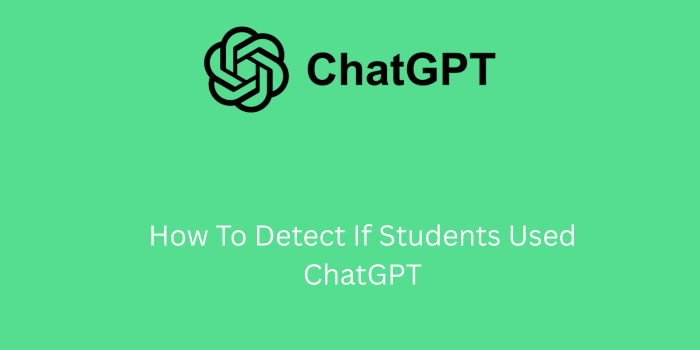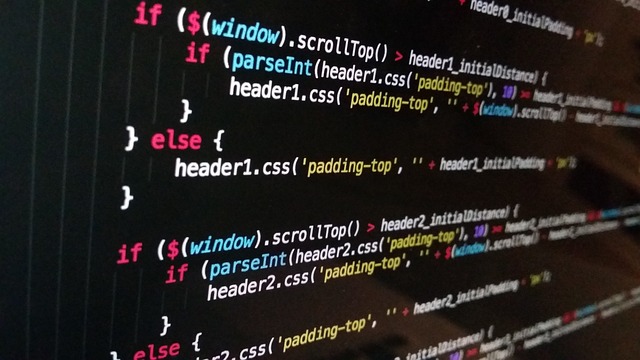ChatGPT is a powerful AI tool capable of writing essays, solving math problems, coding programs, and more. While it can enhance learning, it also raises concerns about authenticity and originality in student work. Educators must adapt by understanding the technology and learning how to detect its use when necessary.
Why Detecting ChatGPT Use Matters
Detecting the use of ChatGPT in student assignments is essential for maintaining academic integrity in modern classrooms. When students submit work generated by AI tools like ChatGPT instead of doing the work themselves, it undermines the principles of honest learning. This can lead to a false sense of achievement and disrupt the educational process. Upholding integrity ensures that students genuinely engage with coursework and develop essential skills.
Skill development is another key reason why detection matters. Students need to practice critical thinking, writing, and research skills to succeed in both academic and real-world settings. If they rely on AI-generated content, they miss out on these important learning opportunities.
Fairness in education is also at stake. When some students submit AI-assisted work and others rely on their own effort, the grading system becomes unbalanced. Detecting ChatGPT use in education helps maintain a level playing field and reinforces trust between students and teachers.
Lastly, detecting AI-generated content supports assessment accuracy. Teachers need to accurately evaluate a student’s understanding to provide meaningful feedback. If AI-written responses go unnoticed, it becomes difficult to measure true academic performance.
Common Signs a Student May Have Used ChatGPT
With AI tools like ChatGPT becoming more accessible, it’s important for educators to recognize patterns that may indicate a student has submitted AI-generated content. While no single sign confirms misuse, a combination of red flags can help teachers make informed evaluations. Understanding how ChatGPT writes—its tone, structure, and limitations—can make it easier to detect when student work lacks authenticity or personal engagement. Educators should be alert to writing that feels too polished, lacks nuance, or doesn’t reflect the student’s usual voice or performance level.
- Overly Formal Language: ChatGPT tends to use polished, academic phrasing that may not match a student’s typical voice.
- Lack of Personal Insight: Assignments may be accurate but feel impersonal or generic.
- Factually Plausible But Incorrect: AI sometimes generates “hallucinated” facts that sound believable but aren’t true.
- Perfect Grammar and Structure: While some students write well, consistent perfection may warrant scrutiny.
- Inconsistent Quality: A sudden improvement in writing or logic can be a red flag.
- Generic Examples: AI-generated work often lacks specific classroom references or unique experiences.
Top AI Detection Tools for Teachers
As more students experiment with tools like ChatGPT, educators need reliable ways to detect AI-generated content in assignments. Fortunately, several AI detection tools have emerged to help teachers identify work that may not be entirely original.
These tools analyze language patterns, sentence structure, and probability models to determine whether a piece of text was written by a human or AI. While no tool is perfect, using one or more detectors can provide useful insights and support fair grading practices.
- GPTZero – Designed to detect GPT-generated text with probability scores.
- Turnitin AI Detection – Integrated into Turnitin’s plagiarism suite for schools.
- Originality.AI – Offers detection and plagiarism scoring for AI-written content.
- Crossplag – Flags AI-generated content and shows side-by-side comparisons.
- Writer.com AI Detector – Simple tool to test short-form writing for AI traces.
Limitations of AI Detectors
While AI detection tools offer valuable support for identifying ChatGPT-written assignments, they are not foolproof. One major limitation is the potential for false positives—flagging student-written content as AI-generated. This can happen when a student’s writing style is highly structured or formal, especially in advanced or well-edited work. Educators must be cautious and avoid making accusations based solely on detection scores.
Another concern is false negatives. As students learn to edit AI-generated content or blend it with their own writing, detection becomes harder. Some tools struggle to identify hybrid content or short answers, which can lead to AI-generated text slipping through undetected. This is especially true as newer AI models improve at mimicking human tone and voice.
Finally, most AI detection tools operate as “black boxes,” meaning they don’t explain how decisions are made. This lack of transparency can make it difficult for educators to defend or explain detection results to students. Because of these challenges, AI detectors should be used as part of a broader assessment strategy—one that includes reviewing student history, writing samples, and open conversations. Overreliance on AI detection can risk undermining trust and fairness in the classroom.
How to Prevent ChatGPT Misuse
Preventing misuse of ChatGPT in the classroom starts with thoughtful assignment design. Educators can create assessments that are difficult for AI to handle effectively by incorporating personalized prompts, open-ended questions, or tasks that require students to reflect on their own experiences. When assignments include references to class discussions, local events, or personal opinions, it becomes harder for students to rely on generic AI responses.
In-class writing activities are another effective strategy. By having students complete essays, reflections, or quizzes during supervised sessions, teachers can ensure that the work is authentically their own. Additionally, asking students to submit drafts, outlines, or planning documents alongside final assignments encourages them to engage in the full writing process and discourages last-minute use of AI tools.
Teachers should also educate students on ethical AI use. Discussing the benefits and limits of tools like ChatGPT can help students understand when it’s appropriate to use AI for learning support versus when it becomes academic dishonesty. Establishing clear school policies and offering guidance on citation or acceptable usage will foster a culture of academic integrity while still embracing the potential of AI in education.
Ethical and Legal Considerations
When addressing suspected ChatGPT use, it’s essential for educators to act fairly and ethically. Jumping to conclusions without solid evidence can damage trust and student-teacher relationships.
Schools should develop clear policies on AI use, outlining what is acceptable and what constitutes academic dishonesty. Transparency helps students make informed choices about using tools like ChatGPT.
Legally, educators must also consider privacy. Using third-party AI detection tools requires care to avoid sharing student data without consent. Balancing detection with student rights ensures a respectful and lawful learning environment.
How to Handle Suspected AI Use
- Compare the assignment to the student’s past work.
- Use one or more AI detectors to test the submission.
- Meet privately with the student and ask clarifying questions.
- Follow your institution’s academic integrity policy.
- Offer learning support if the student was overwhelmed or confused.
The Future of Academic Integrity in the AI Era
AI isn’t going away, and neither is the need for genuine learning. As AI tools improve, educators must evolve assignment design, promote ethical AI use, and support digital literacy. Schools should integrate AI education into their curriculum to help students understand appropriate applications.
Conclusion
Detecting whether students used ChatGPT for assignments requires a mix of awareness, technology, and thoughtful teaching practices. By staying informed and proactive, educators can uphold academic integrity while helping students navigate the evolving digital world.






